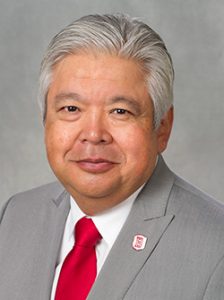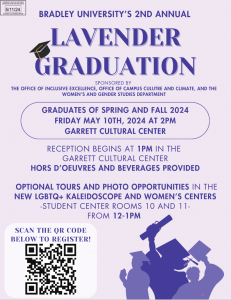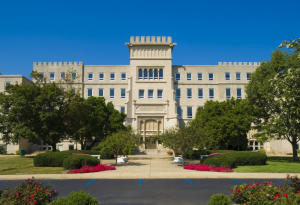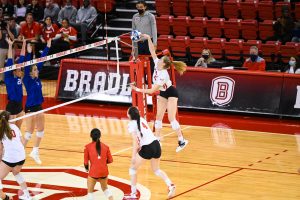After last fall’s $7 million budget cuts, the university expects to end the current fiscal year with an estimated positive operating margin of $950,000.
In a February email, University President Joanne Glasser announced to university employees that the majority of this remaining balance will be used for a one time, one percent additional wage payment to “substantially all full-time employees.”
According to Vice President for Business Affairs Gary Anna, this one percent allocation will approximate to $600,000, and an additional base increase for selected faculty will add $175,000 to this year’s operating costs.
“Those two items combine to $775,000, which leaves only $175,000 from the $170 million operating budget,” Anna said. “As a student, if you provided yourself $1,000 for monthly expenses, this would be the equivalent of planning your monthly expenses down to $1.”
The decision to direct these additional funds to employees came from Glasser and the Board of Trustees during a board meeting earlier this semester, according to the president’s email.
“One of our highest priorities is that we want to fairly compensate our faculty and our staff members,” Chairman of the Board of Trustees Doug Stewart said. “We are trying to balance that because we know that they have not had meaningful pay raises over the last few years. We wanted to do something to make sure that both faculty and staff understand that we are concerned about this as well…and we are hopeful that down the line here, we will be able to have pay increases on a regular basis.”
According to Stewart, additional employee compensation was the first and only alternative considered for allocating the estimated positive operating margin.
Although employee compensation was a recurring theme in the recent presidential search forum conversations, Anna said this payment is not meant to make a substantial difference in employee wages.
“This payment, scheduled for early May, is intended to support the belief that our employees are primary to the Bradley student experience and success,” he said.
Stewart echoed this, speaking from the perspective of the Board of Trustees.
“Is it going to make a big difference? No,” he said. “I think it’s more about the message that we’re trying to send here. We understand that this is something we need to work on. It’s hard for us to build salary increases into our current budget, and hopefully this will help with some of the increased expenses that I’m sure [employees] are experiencing on an annual basis.
Not all employees will participate in this payment, however, as Glasser’s email stated that “members of the President’s Cabinet, deans and certain head athletic coaches” will not receive such a payment.
“The first [question] was, ‘Do we only do it for the faculty?’” Stewart said. “In our view, staff that support areas very critical to the success of the institution likewise, for the most part, haven’t had increases. We thought it was important that the majority of the people at the university get this [payment].”
Last fall’s budget cuts resulted in decreases in the number of adjunct instructors and class sections, and, despite the estimated positive operating margin for this fiscal year, the future expansion of these areas remains uncertain.
“These changes will depend on enrollment trends, course needs and other assessments by the deans and departments of the university in conjunction with administration,” Anna said.
Stewart expanded upon this, saying that Bradley is an enrollment-driven business that sees issues despite having a “strong balance sheet” and a substantial endowment that provides liquidity.
“The big hole that has occurred is we’ve seen a decline in enrollment,” Stewart said. “That’s definitely something we need to figure out whether or not is a steady state or whether it’s something we can improve…In terms of undergraduate, full time, on campus enrollment: that’s an area we need to continue to work on.”
However, Stewart also said other areas may be able to offset this undergraduate enrollment decline.
“As we look down a couple years, our graduate school could, in two different ways, augment these revenues,” Stewart said. “One [is] just because we’re getting a growth in our on campus graduate students. But more importantly, we’re bringing on these distance learning graduate programs, which are going to be launched for the first time this fall.”
As for the number of adjunct instructors, Stewart said this, too, would depend upon enrollment.
“Adjunct faculty and other part-time employees are oftentimes used to adjust for the number of students that want to take certain classes and therefore the size of the classes, so that ends up being an area that goes up and down based on the demand the students have,” Stewart said. “The more students, the more need there’s going to be for those positions; the less students we have taking courses, the less reason we need additional part-time faculty to service the additional credit hours.”








